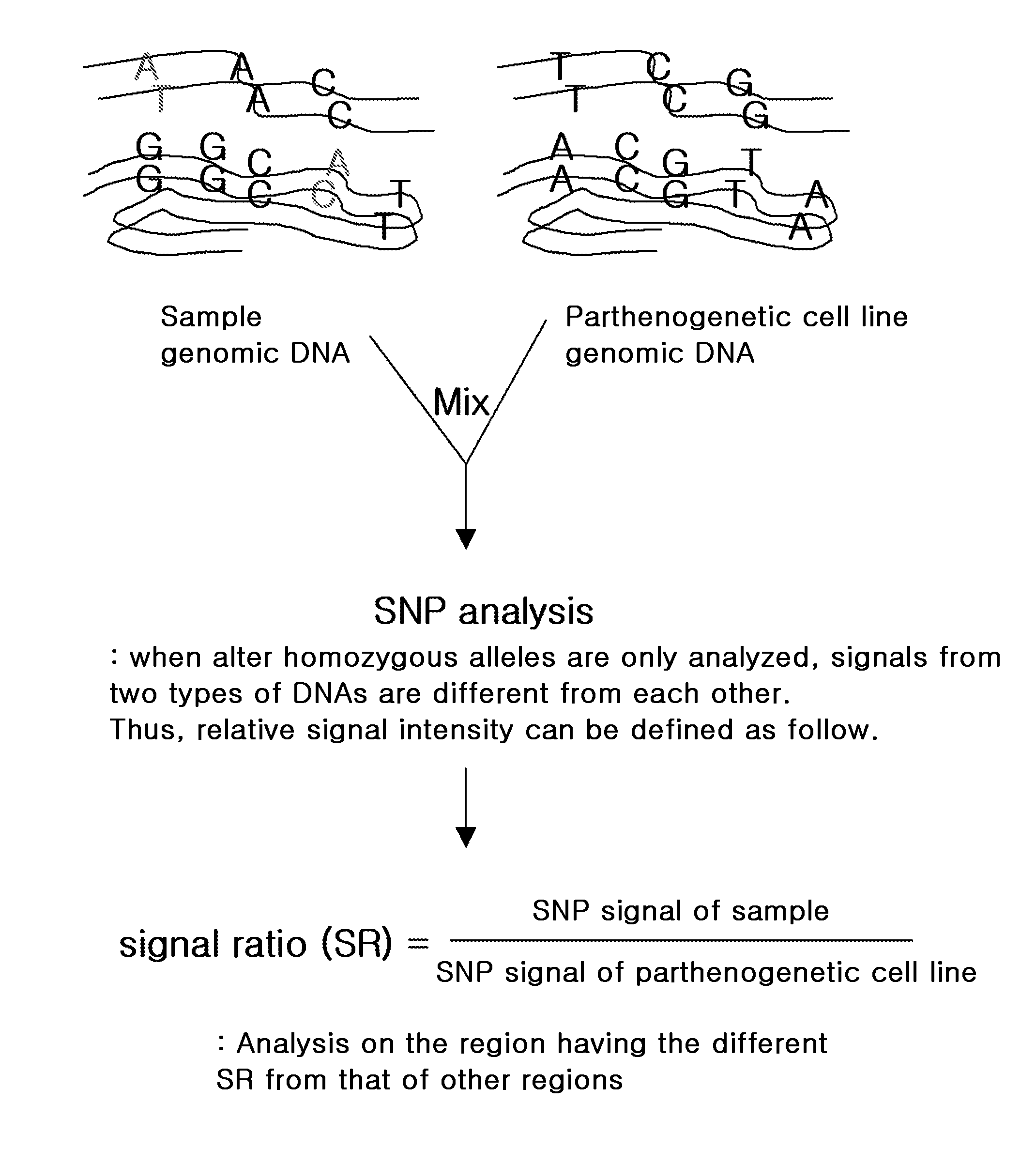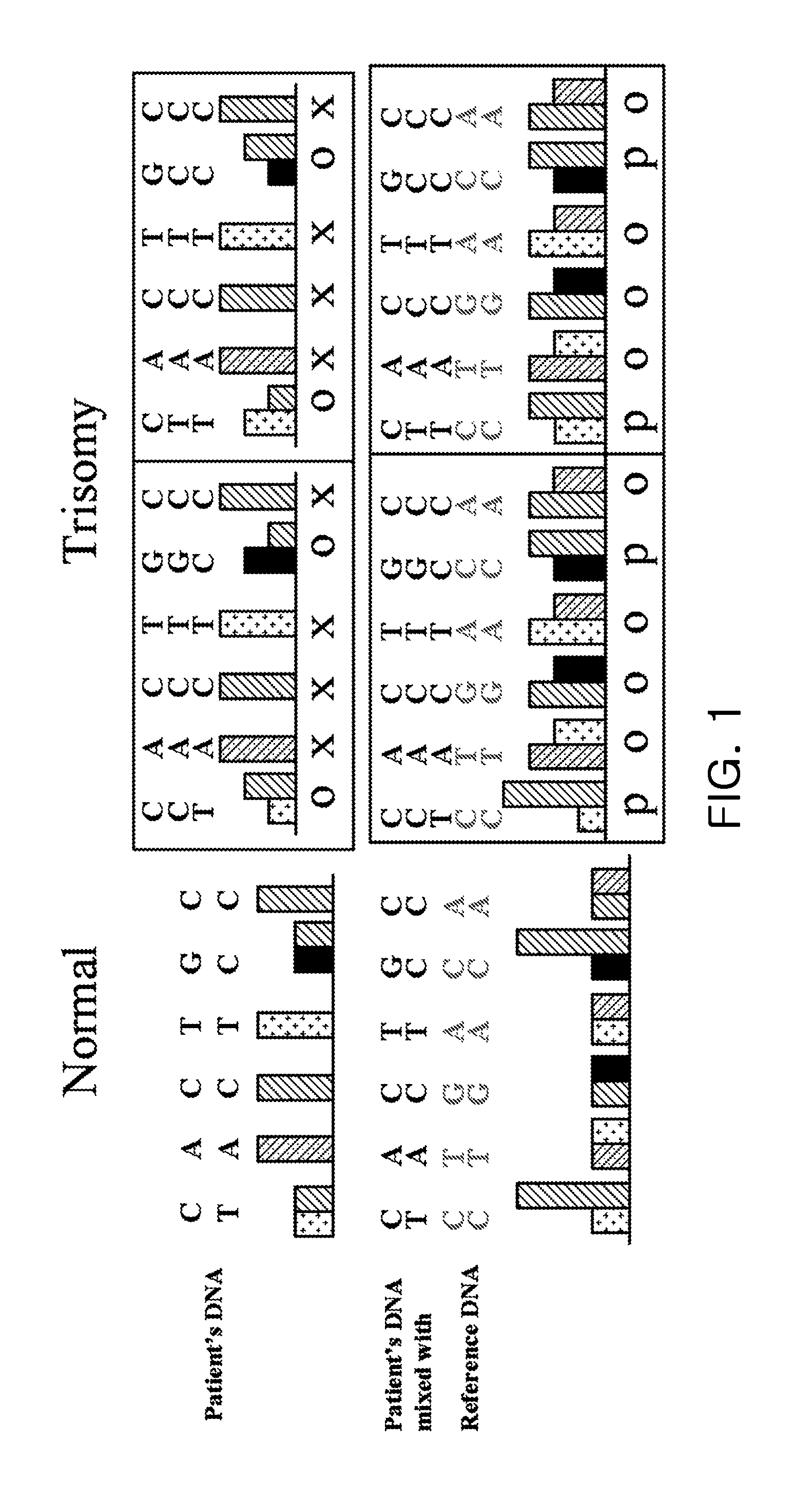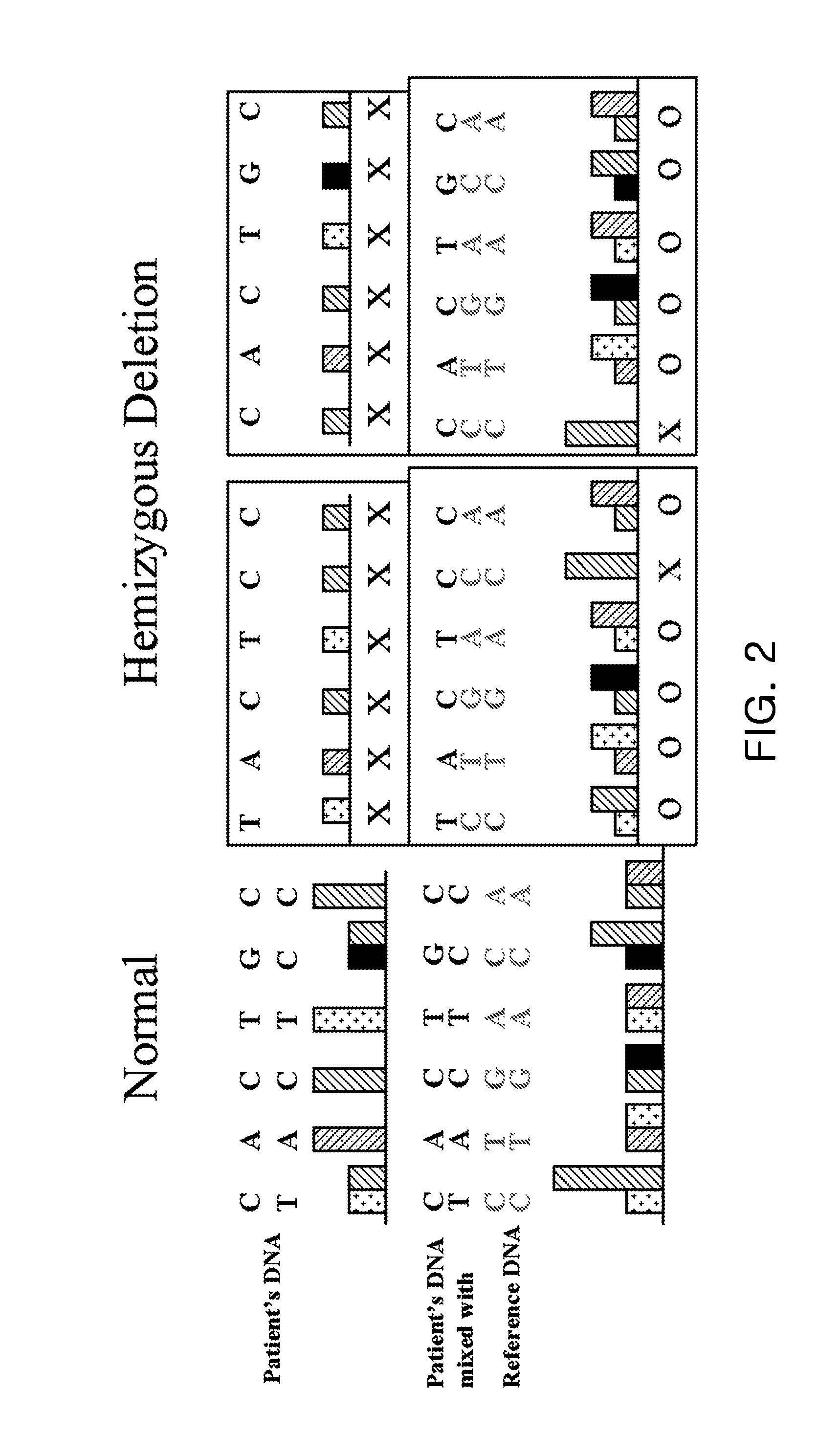Method for measuring chromosome, gene or specific nucleotide sequence copy numbers using SNP array
a technology of chromosome and gene, applied in combinational chemistry, biochemistry apparatus and processes, library screening, etc., can solve the problems of not usually measuring, and requiring much time and manpower to interpret fish methods, etc., to reduce time and manpower, the effect of detecting duplication and deletion of chromosomes and accurate values
- Summary
- Abstract
- Description
- Claims
- Application Information
AI Technical Summary
Benefits of technology
Problems solved by technology
Method used
Image
Examples
example 1
SNP Array for Detection of Increased Copy Number
[0060]After a normal test sample DNA was analyzed singly and a 1:1 mixture of normal test sample DNA and homozygous DNA was analyzed, the relative signal intensity of each allele was shown. The relative signal intensity of the allele in the normal test sample (Normal) was shown in the left of the FIGURE. The relative signal intensity of the allele, when the copy number was changed to trisomy, was shown in the right of the FIGURE, where the change in each DNA strand is depicted separately. After analyzing the information on all alleles of the test sample and homozygous DNAs, each allele was analyzed using SNP arrays according to the method of the present invention. When the copy number is measurable, it is represented by ∘. When the copy number is not measurable, it is represented by x. p represents that increase or decrease in the copy number cannot be determined by the relative signal intensity of a specific allele but changes are fou...
example 2
SNP Array for Detection of Decreased Copy Number
[0061]Deletion of one allele was shown as the relative signal intensity of each allele, where the deletion in each DNA strand is depicted separately. When the SNP array was performed on the test sample only, the deletion could not be determined from the result of one allele, and the possibility of deletion could be determined by analysis of neighboring alleles. However, when the method of the present invention is used, each allele can be analyzed, thereby determining the deletion, and its analytical performance is much improved, compared to the prior methods (FIG. 2).
example 3
[0062]SNP array of homozygous hydatidiform mole DNA and Down's syndrome patient DNAs from homozygous hydatidiform mole cell line and Down's syndrome patient having three copies of chromosome 21 were mixed with each other in a ratio of 1:1, and then the SNP array was used to analyze the copy number. Excluding chromosome 21 and X chromosome, SR was found to be 1:1, 1:3, and 3:1. The chromosome 21 was found to show SR of 2:3, 3:2, 1:4, and 4:1, in which SR of 2:3 or 3:2 indicates three copies of chromosome 21 in Down's syndrome patient (FIG. 4).
PUM
| Property | Measurement | Unit |
|---|---|---|
| fluorescent in situ hybridization | aaaaa | aaaaa |
| time | aaaaa | aaaaa |
| colors | aaaaa | aaaaa |
Abstract
Description
Claims
Application Information
 Login to View More
Login to View More - R&D
- Intellectual Property
- Life Sciences
- Materials
- Tech Scout
- Unparalleled Data Quality
- Higher Quality Content
- 60% Fewer Hallucinations
Browse by: Latest US Patents, China's latest patents, Technical Efficacy Thesaurus, Application Domain, Technology Topic, Popular Technical Reports.
© 2025 PatSnap. All rights reserved.Legal|Privacy policy|Modern Slavery Act Transparency Statement|Sitemap|About US| Contact US: help@patsnap.com



